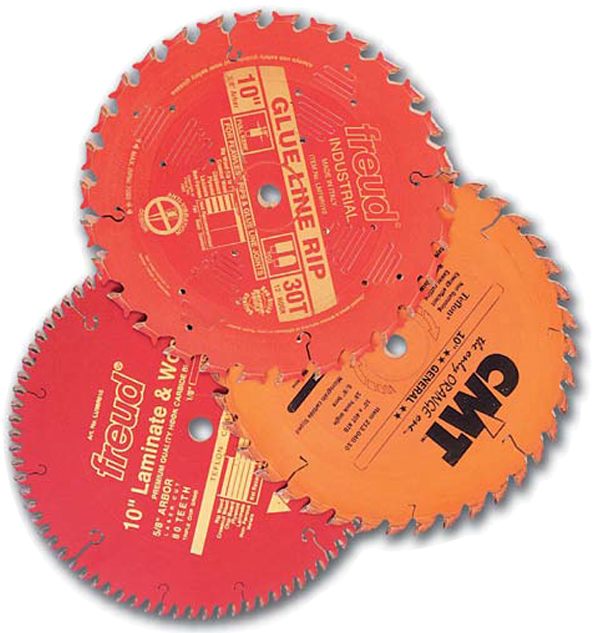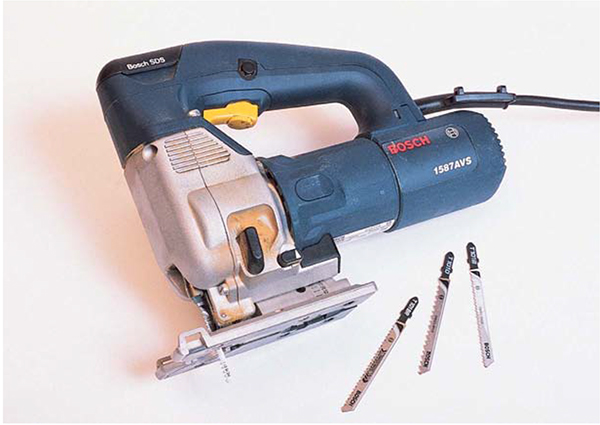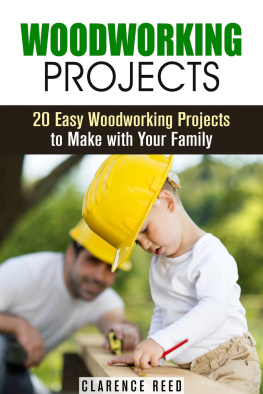

Equipment and Materials
O n the following pages are pictures and descriptions of the woodworking tools and materials youll learn how to use by completing the projects in this book, as well as a few other optional pieces that you might want to include in your collection. Its best to build your collection gradually, making purchases only as necessary. Otherwise, the costs can become overwhelming, and youll wind up having fancy tools you dont need.
Basic Woodworking Tools

HAMMER
A hammer of the correct weight (most woodworkers choose a 20-ounce or 24-ounce hammer) should be able to effortlessly drive a nail into wood.The claw end is used to remove nails.

NAIL SET
Used to set the head of a finish nail below the surface of the wood.

COMBINATION SQUARE
Used as a depth gauge and a ruler, a combinationsquare measures lengths as well as 45-degree and 90-degree angles. (Combinationsquares combine the functions of a tri squareand a miter square; you can also use these twosquares separately instead.)
Using Power Tools Safely
U sing power tools improperly can be extremely dangerous. It is important that you carefully read and understand the instructions that come with any power tool before you use it.
It is also important that you use eye protectionsafety goggles or safety glasses made for shop use. You should always protect your eyes from the very real possibility of flying debris caused by the use of power tools.
Nearly everyone who works in a woodshop knows someone who was injured when a hand or finger came too close to a power tool, or vice versa. Good woodworkers are aware of where their hands are at all times. Fingers should always be kept at least 4 inches away from a blade or bit that has been turned on.
Hearing protection should always be used; even short exposure to the sound of loud power tools can cause hearing damage.
Cutting tools that are in good repair and used properly will always cut through wood quickly and easily. You should never have to force a blade through wood. If a blade is bindingbeing pinched by the woodor a woodworking tool is not cutting easily, something is wrong. Turn the machine off and correct the problem by readjusting the wood or changing the blade.
SPEED SQUARE
A triangle-shapedsquare used to measure and checkmeasure and checkdegree angles.
POWER MITER SAW
A stationary electric saw used to cut wood, either straight on or at an angle. The wood is held at the bottom of the unit and the blade is brought down upon it.
TABLE SAW
A stationary electric saw that can cut wood straight on or at an angle. The wood is pushed along the surface toward the blade.

ASSORTED SAW BLADES
Various sizes and types of blades are available foruse with the table and miter saws.

PUSH STICK
A safety tool used for pushing wood through a tablesaw, a push stick helpskeep your hands awayfrom the blade.

HAND-HELD JIGSAW AND BLADES
A jigsaw is excellent for making curved cuts,but it also makes straight and angled cuts. Note that while many woodworkers use theterms jigsaw and saber saw interchangeably, others differentiate the jigsaw as being the smaller of the two saws.
ROUTER
Routers have a bit sticking out of the bottom that isused to smooth, round, hollow out, or decorate wood.Standard (or fixed) routers are best suited for workalong the edges of a piece of wood. For work that iscloser to the center of the wood, such as groove cutting,a plunge router is recommended instead.
PLUNGE ROUTER
Operates much the same as a regular router, but has abuilt-in base through which the bit can pass and plungeinto the surface of the wood. Some combination routersare now available that feature a detachable base, allowingyou to use the tool either as a fixed or plunge router.

ROUTER BITS
Attachments for the router are known as bits or cutters.Pictured here are just a few of the hundreds that can beused to put different edges or patterns, known as profiles, in wood. Many bits come equipped with guidebearings that help them to move smoothly over a surface. When changing a router bit, unplug the router,turn it upside down, and use a wrench to remove onebit and replace it with another.

TAPERED BIT WITH COUNTERSINK
Used to drill holes for flathead wood screws. The bit is tapered to match the shape of a wood screw, while the countersinkthe thicksegment above the bitcuts out a larger section for the head of the screw.

BATTERY-POWERED DRILL
Quickly drills holes in wood, using a variety of bits and bit sizes. The battery-powered drill can also drive in screws and extract them. For the projects in this book, its important to keep the drill perfectly perpendicular to the surface of the wood.
FORSTNER BIT
The forstner bit is also useful for flat-bottomed holes, as well as angled and overlapping cuts and holes that go all the way through the wood.




























